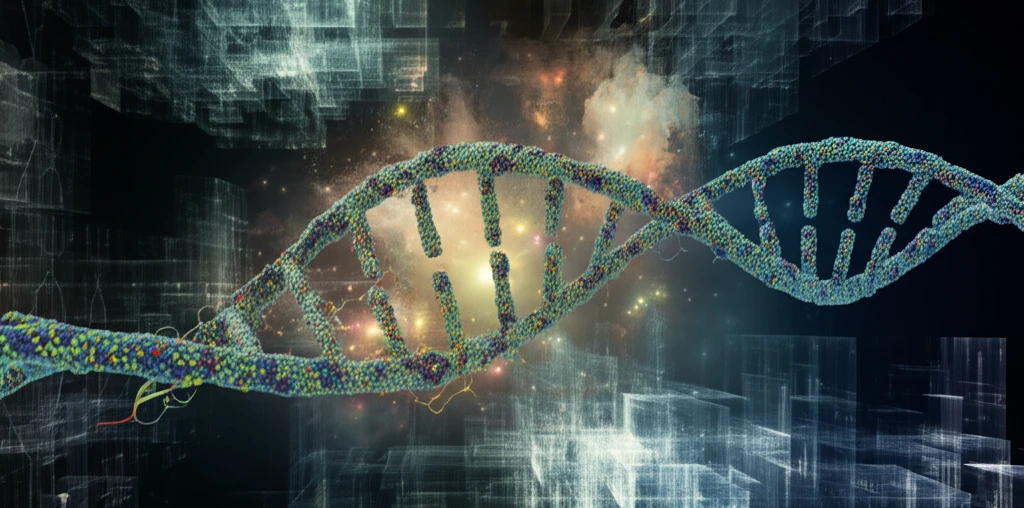
Decoding the Cellular Blueprint: How Understanding Protein Complexes Could Revolutionize Medicine
"Unraveling the mysteries of the CCR4-NOT complex and its potential impact on gene expression and disease treatment"
In the intricate world of molecular biology, gene expression—the process by which information from a gene is used in the synthesis of a functional gene product—is a fundamental process. This process is not a simple on/off switch but a carefully orchestrated symphony of molecular interactions. Central to this orchestration is the CCR4-NOT complex, a multi-subunit protein assembly that plays a pivotal role in regulating gene expression and the degradation of messenger RNAs (mRNAs).
Imagine the CCR4-NOT complex as a master conductor, ensuring that the genetic instructions are accurately translated and that any faulty or unnecessary messages are promptly silenced. This complex acts as a 'scaffold', providing a platform for various regulatory proteins to assemble and exert their influence on gene expression. Understanding the structure and function of this complex is crucial for deciphering the cellular blueprint and developing targeted therapies for a wide range of diseases.
Recent research has focused on unraveling the structural details of a specific domain within the CCR4-NOT complex, known as the NOT1 MIF4G-like domain. By examining this domain, scientists aim to gain deeper insights into how the complex interacts with other proteins and carries out its regulatory functions. This exploration could unlock new avenues for manipulating gene expression to treat diseases where this process goes awry.
The NOT1 MIF4G-like Domain: A Structural Deep Dive

The CCR4-NOT complex relies on the NOT1 protein to serve as its central organizing hub. This protein, highly conserved across different species, contains a series of helical domains that act as docking sites for other CCR4-NOT subunits. Recent structural analysis has focused on a connector domain of NOT1, derived from the thermophilic fungus Chaetomium thermophilum (Ct). This domain exhibits a structural fold similar to the MIF4G domain, leading researchers to term it the MIF4G-C domain.
Unlocking Future Therapeutic Potential
Although the precise function of the MIF4G-C domain remains elusive, its structural conservation hints at a significant role within the CCR4-NOT complex. Further research is needed to fully elucidate its function. Future studies are aimed at understanding its contribution to the regulation of gene expression and its potential as a therapeutic target. By deciphering the intricate workings of the CCR4-NOT complex, scientists hope to unlock new treatments for diseases linked to gene expression dysregulation, from cancer to autoimmune disorders.
